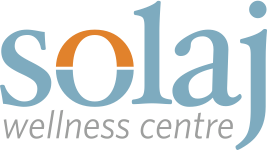Common Symptoms
- Limited range of motion when trying to rotate or walk on the ankle
- Difficulty bearing weight on the affected ankle
- Tenderness around the ankle, achilles tendon, or shin
- Swelling or bruising around the ankle
Discomfort can be felt anywhere from your achilles tendon, on either side of your ankle or even your shin. It may come on suddenly from an acute injury or gradually over time from a more subtle issue.
When pain develops in an ankle, you can often strain other areas of the body in an effort to protect the ankle. For example, limping or placing more weight on the opposite ankle can lead to problems in the back, hip, or knee. If you are feeling pain in one or more of these areas, it is possible that the issues are related to one another.
Internal Scar Tissue
Internal Scar Tissue is a thick, tough, fibrous material that the body creates to quickly repair a damaged tissue such as muscles and tendons. It can build up in any area of the body where there has been internal and/or external damage. Internal Scar tissue is a very common cause of recurring or chronic pain after sport or work injuries, after surgery and it also often intermixes with Osteoarthritis.
Visit our Internal Scar Tissue Page to learn more.Ankle Sprain
Visit our Sprained Ankle Page to learn more.
Achilles Tendonitis
Visit our Achilles Tendonitis Page to learn more.
Stress Fracture
Osteoarthritis
Progressive wear and tear on the joint, causing the cartilage that acts as a lubricant and shock absorber to break down, eventually resulting in bone-on-bone grinding. This condition also affects the muscles around the joint, causing them to become weak, tight, painful and prone to tearing.
Visit our Osteoarthritis Page to learn more.
Cold Laser Therapy Ankle Pain Treatment: Step1
Cold Laser Therapy Ankle Pain Treatment: Step 2
Cold Laser Therapy Ankle Pain Treatment: Step 3
Removes Internal Scar Tissue: Inhibits and removes Internal Scar Tissue that naturally forms after an injury and can cause discomfort and a delay in healing.
Regenerates Muscle Tissue: Transfers light energy to the affected cells of muscle, regenerating and strengthening damaged muscle tissue to prevent future injury.
Activates Cartilage Production: Promotes the natural cartilage growth process by increasing the production of cellular energy (ATP).
Accelerates Bone Repair: Simulates the bone cells to replicate and produce new healthy bone tissue.
Nerve Regeneration: Helps damaged nerves to recover by growing the neural network and repairing vital insulation around the nerve.
Stimulates Blood Flow: Increases the delivery of oxygen and nutrients required for healing of the affected cells.
Visit our Cold Laser Therapy Page to learn more about how the treatment works.
